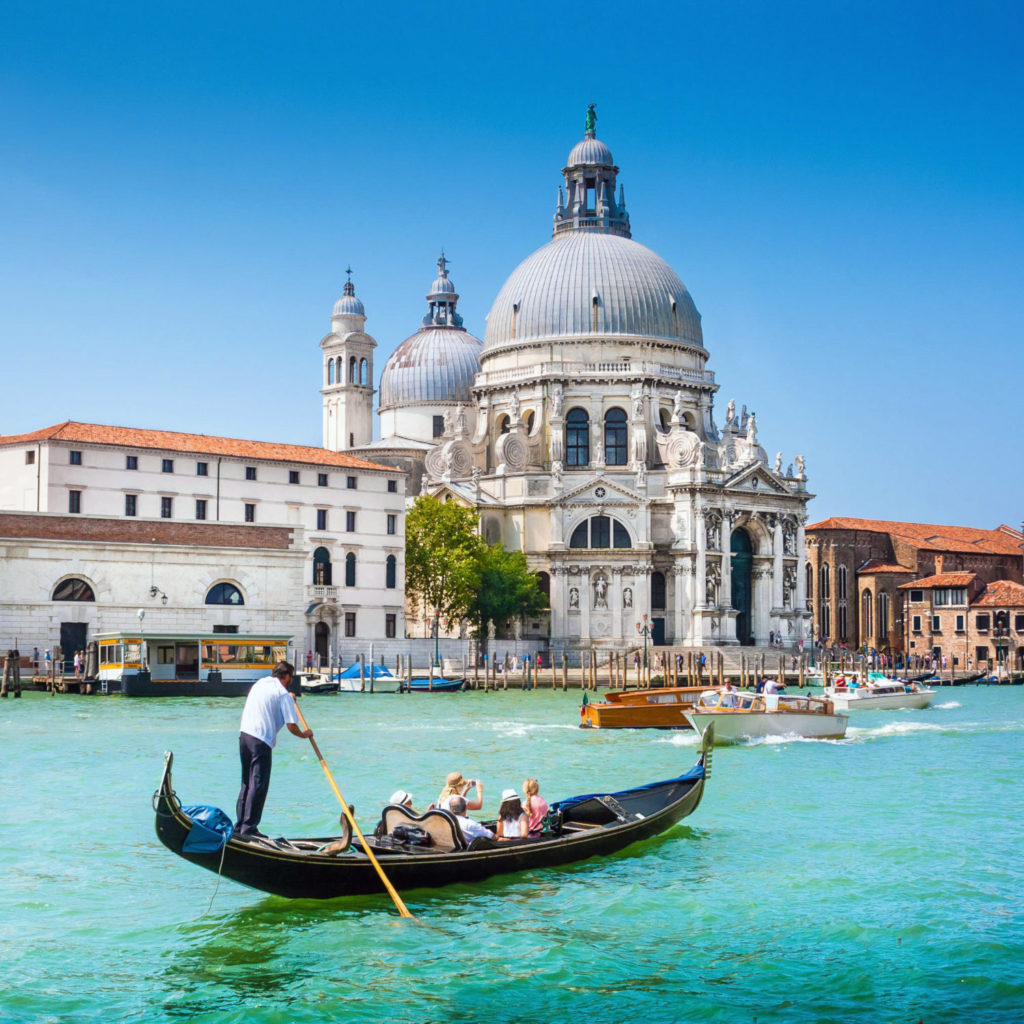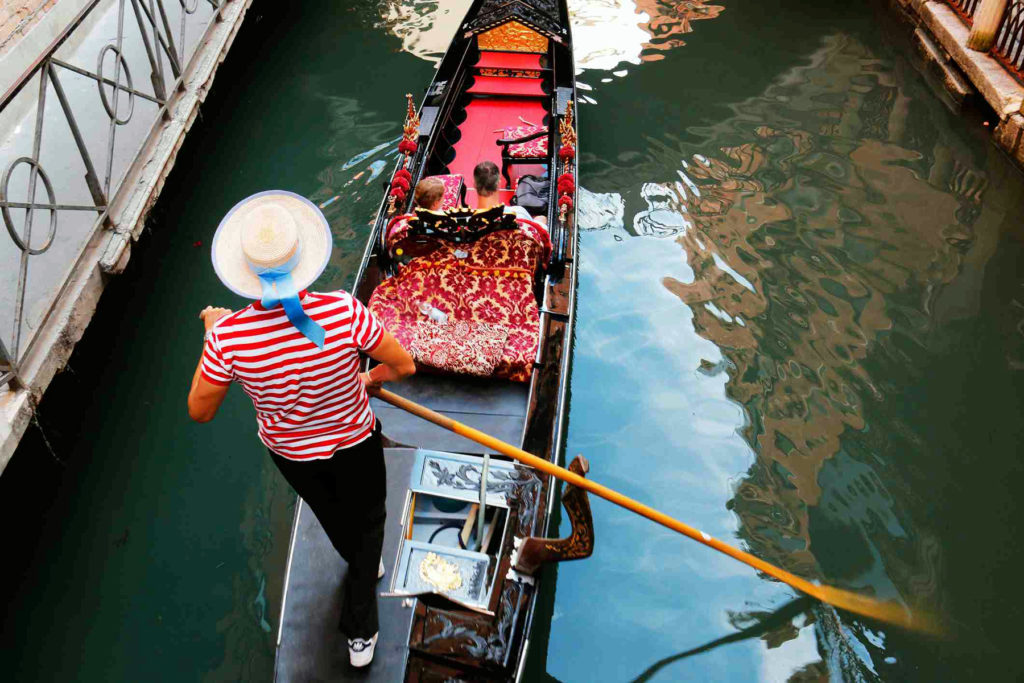The origin of the gondola is shrouded in mystery, but historians have traced records back to 1094, when Doge Vitale Faliero mentioned a Gondolum in a letter to the people. To prevent a revolt, he gifted the people gondola-like boats to help ease their travels within the town.
The first visual depiction of a gondola was brought to the fore during the 1400s by famed artists Carpaccio and Bellini in paintings that have been preserved. It was therefore in the 15th century that we know for certain that gondolas were built and used to navigate Venice’s many canals. During this period, gondolas looked different from today’s means of transportation. Used primarily by the city’s elite, gondolas were adorned with ornate decorations. In the 16th century, the Italian government placed a ban on what had by then become increasing extravagant gondolas and ordered that all private vessels to be painted black, a practice that continues today to maintain uniformity.
By the 17th century, roughly 9,000 gondolas floated around the city. Their design has been optimized over the years to serve better as passenger vehicles in a city where sea water flows not around, but through it. Today, almost all of the 400 gondolas in Venice follow a uniform design.

It takes about two months to construct a gondola and only those who have mastered the art and abide by a strict code called the mariregole can build one. Regardless of who has built it, each gondola is surprisingly similar to the other. They weigh about 1,350 pounds and measure 36 feet in length. The boats are built to seamlessly navigate through the narrow canal system and beneath the footbridges in Venice. While it is flat-bottomed like a canoe or kayak, the resemblance ends there. Gondolas are asymmetrical, longer and narrower.
Interestingly, each gondola is made from eight different kinds of wood: elm, mahogany, birch, oak, lime, cherry, walnut and larch. Each serves a different purpose, ensuring that the boat stays afloat and can carry its maximum intended weight. To balance the gondolier’s weight, the port side is nine inches wider and higher than the starboard, where he stands. Acting as a counterweight to the gondolier is the ferro, a metal piece that sits at the boat’s bow. It also dually helps keep the gondola level above water. The only adornment is the risso, a seahorse-shaped ornament that is placed on the stern.
The final aspect of a gondola is the forcola or the oarlock, which is attached to the stern. Made of walnut, the forcola is designed with a curve and comes with several hooks where the oar can be placed, based on the gondolier’s requirement while rowing. To prevent the boat from spinning, the gondolier creates strokes in the shape of a ‘C’ or ‘J’ using the forcola as support.

The key that binds all of this together is the gondolier. Dressed in black-and-white striped shirts, black pants, each is quick with a smile when approached by a tourist. The gondoliers are part of an ancient, noble profession. At one time it was a nearly impenetrable community. From the 16th century onwards, gondoliers were born into the profession. The title was handed down through generations of men in a family. They were more than tour guides, gondoliers were the city’s keepers of secrets and scandals.
The Historic Cafés of Italy
Today, to become a gondolier one has to go through gondola school, where they study the physics of rowing, test physical strength, learn a foreign language and familiarize themselves with the city’s history. After the training, students are required to clear a highly competitive test administered by the Ente Gondola. It is then necessary to complete an internship and pass a final practical exam on the waterway. Only upon passing all stages is one issued a gondolier’s license.








